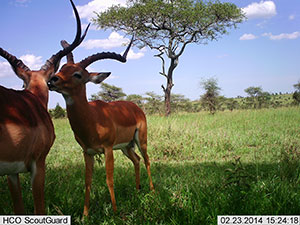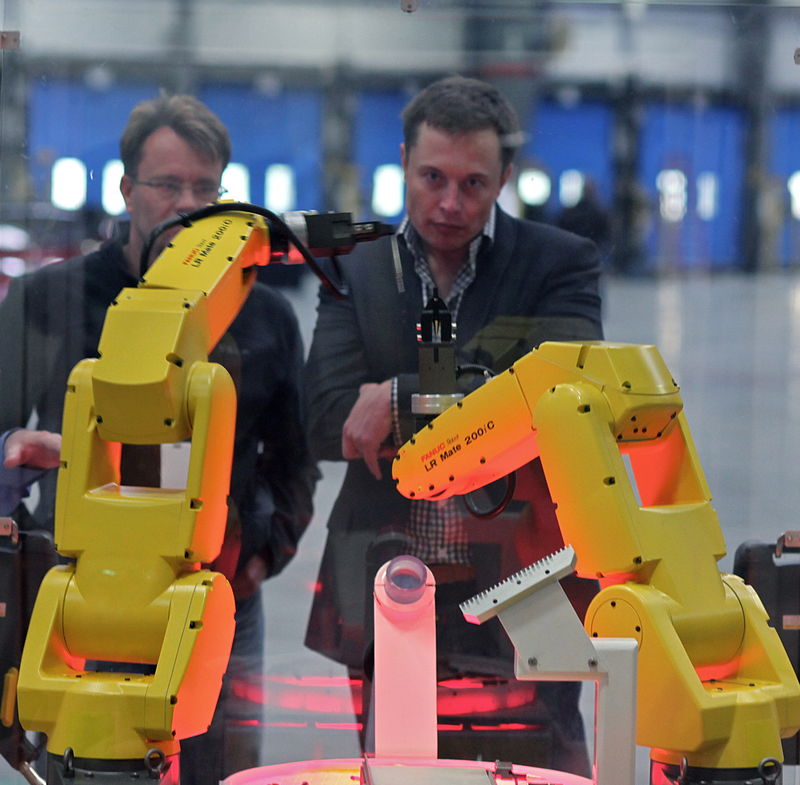An artificial intelligence (AI) method called deep learning can now count wildlife and describe animals in their natural habitat.
Before unpacking what that means for wildlife research, it's helpful to have some sense of the diverging views surrounding the use of AI. In just the last couple of months, the Washington Post alone has published AI-focused articles with headlines that include, “What Artificial Intelligence Doesn’t Understand,” "Google’s Artificial Intelligence Can Pass as Human,” “AI Will Spell the End of Capitalism” and “AI Is More Powerful Than Ever. How Do We Hold It Accountable.”
There’s no indication that the Washington Post is formally opposed to AI or carries a bias against it, though the series of headlines randomly plucked from a Google search would suggest as much. Still, what the headlines more aptly reflect is fear, while those favoring artificial intelligence point to freedoms and advancements this technology could offer.

In Tanzania, cameras collect millions of images of animals in their natural habitat (as pictured here), but the information in these photos is only useful after human volunteers have converted images to text and numbers, essentially identifying and labeling each image. Photo: Snapshot Serengeti Photo (via University of Wyoming)
This debate, however, isn't one that's reached the wildlife community in any measurable way ... yet. AI's use in wildlife research — like the one published on deep think technology— could change all of that. According to an article published by the University of Wyoming, AI reads photography to accomplish identification. The photos are collected using motion-sensor cameras and then those photos are “automatically described by deep neural networks.”
What’s startling perhaps is the system’s accuracy, which automates, “animal identification for up to 99.3 percent of images while still performing at the same 96.6 percent accuracy rate of crowdsourced teams of human volunteers,” according to the Proceedings of the National Academy of Sciences (PNAS), which first reported on the technique.
What Problem Does AI Solve for Wildlife Researchers?
“This technology lets us accurately, unobtrusively and inexpensively collect wildlife data, which could help catalyze the transformation of many fields of ecology, wildlife biology, zoology, conservation biology and animal behavior into ‘big data’ sciences. This will dramatically improve our ability to both study and conserve wildlife and precious ecosystems,” says Jeff Clune, the senior author of the paper. He is the Harris Associate Professor at the University of Wyoming and a senior research manager at Uber’s Artificial Intelligence Labs.
The University of Wisconsin points to the man hours required to make use of images captured by motion-sensor cameras. In Tanzania, for instance, cameras collect millions of images of animals in their natural habitat, but the information in these photos is only useful after human volunteers have converted images to text and numbers, essentially identifying and labeling each image.
It’s estimated by project researchers that this technology could save more than eight years of human labeling efforts for each additional 3 million images.
“Deep learning is still improving rapidly, and we expect that its performance will only get better in the coming years,” said Sadegh Norouzzadeh, who helped author the research report. “Here, we wanted to demonstrate the value of the technology to the wildlife ecology community, but we expect that as more people research how to improve deep learning for this application and publish their datasets, the sky’s the limit. It is exciting to think of all the different ways this technology can help with our important scientific and conservation missions.”
The fact is, this is a win for wildlife research. It reduces labor requirements and hastens outcomes. Yet, it's only natural for some to make the mental leap and ask such questions as, “what if someone starts taking 3 million pictures of my town and my habitat, then what? Can I be recognized and counted?"
The general fear — as the debate relates to all AI technology — is its potential misuse.

Elon Musk, right, has warned of the dangers of artificial intelligence. Here, the billionaire engineer observes the assembly demo of a robot arm. Photo: Steve Jurvetson (Wikipedia)
As AI creeps into the wildlife and hunting community in both big and small ways, those in leadership positions will be faced with critical decisions. On a national level, the two diverging thoughts on AI are best represented by Facebook head Mark Zuckerberg and perhaps lesser-known Elon Musk, billionaire tech leader and founder of SpaceX.
According to USA Today, “Musk told the National Governors Association this fall that his exposure to AI technology suggests it poses ‘a fundamental risk to the existence of human civilization,'” while it was widely reported that Zuckerberg countered calling the doomsday talk, “pretty irresponsible.”
Regardless, the country continues to debate what a future fully invested in AI looks like, while the wildlife community can now count animals with swift and accurate automation.
Featured Photo: Lori Iverson (USFWS)






